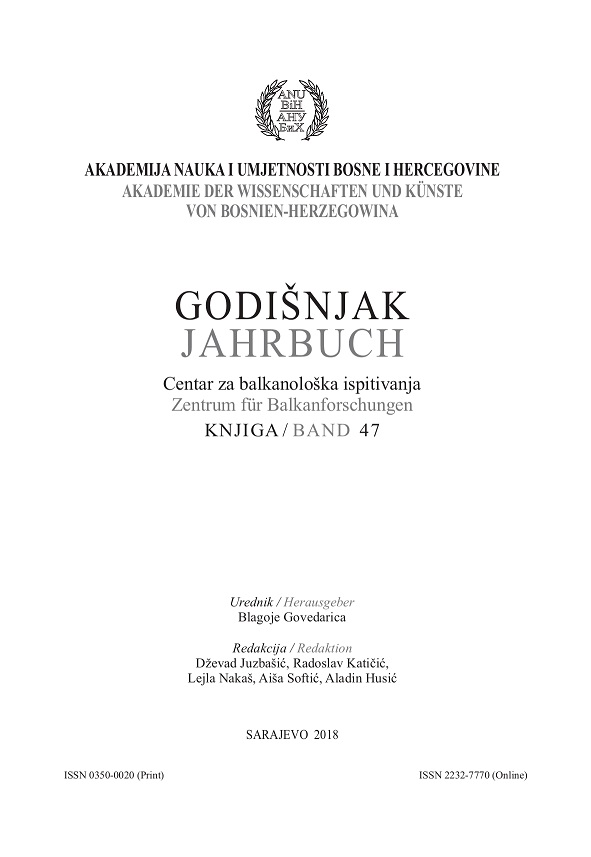O organizaciji i načinu funkcioniranja sudske vlasti u kadiluku Tešanj u drugoj polovini 18. stoljeća
On the Organization and the Functioning of Judiciary Authority in the Qadha of Tesanj in the Second Half of the 18th Century
Author(s): Aladin HusićSubject(s): History of Law, Governance, Local History / Microhistory, Politics and law, 18th Century
Published by: Akademija Nauka i Umjetnosti Bosne i Hercegovine
Keywords: qaza of Tešanj; qadt; naib; katib; muhzir; assisting services; judiciary jury (Suhudul-hal);
Summary/Abstract: Separate qaza of Tesanj was formed in second half of 16th century after complete stabilization of government which followed the conquest that happened, most probably, in October 1512. The qaza consisted of 4 nahiya districts: Tesanj, Maglaj, Usora, Ozren, and Trebetin. In the area belonging to the qaza 4 urban settlements had developed, while there existed 150 rural settlements in the qaza. In 17th century, together with other 36 qazas, Tesanj was ranked at the degree of “salise“, keeping this rank in 18th century as well. Due to the vast areas qaza of Tesanj covered the structure was organized in manner that in centre there was residing judge / qadt with all complementary services, while in nahiya districts of Zepce and Maglaj there were branch offices. This organizational structure remained until the end of 18th century, while Maglaj was organized as a separate judiciary region during 19th century. Qadt in the qazas centre in Tesanj had own assistant (nab). In this paper there is an overview of documented names for judges who performed duty of qadt or naib be it in the centre of qaza or in branch offices in Maglaj and Zepce. It is observable that in the second half of 18th century the qadts did not perform their duty conscientiously and in accordance to the judiciary codex which used to be broken in many ways. In a couple of complains and even in the ferman that was issued and delivered to Bosnia deviating discrepancy methods of qadts from rules of judiciary service are observable. Firstly, into ranks of qadt assistants started to creep in persons who according to the existing rules were not deserving this post. Therefore, in the second half of 18th many complains appear requesting change of naibs due to the fact that they were locals. This situation could open way to a possible unconscientious work and abuse of the position. However, qadts also used to commit acts that were out of judiciary manner, those include taking bribe what consequently led to unfair verdict. Due to the quoted circumstances some cases were addressed to the qadt in Travnik. This started to take ground especially after some officials of judiciary government started to perform in practice “mobile judging” where they seemingly would do judging or do other activities. For them this was way to reach additional funds in easy and uncomplicated way which was against the law. Based on available sources it has been established that in Tesanj existed following posts: qadï service, naib service, katib (secretary), muhzir, assisting services, and sometimes institution of judiciary jury. This paper based on available and documented sources presents activities of each single judiciary post that was counted above.
Journal: Godišnjak Centra za balkanološka ispitivanja
- Issue Year: 2018
- Issue No: 47
- Page Range: 199-213
- Page Count: 15
- Language: Bosnian

